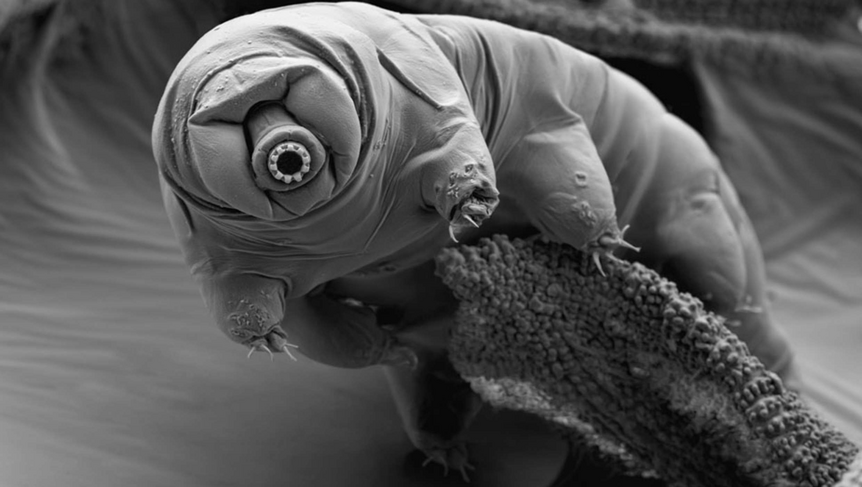Create a free profile to get unlimited access to exclusive videos, sweepstakes, and more!
Would extreme cold turn you into an abominable snowman, or would you emerge alive?

With space agencies such as NASA and ESA setting their sights on Mars before anyone even lands on the Moon again, they must face one harsh truth about that alien red desert. It’s freezing.
Mars has an average temperature of -81 degrees Fahrenheit. That doesn't even account for how low temps can plunge in winter—up to -225 degrees Fahrenheit. Though the first astronauts on Mars probably won’t venture anywhere near the poles, conditions like this are going to require humans to toughen up. Humans have perished in conditions far less extreme than the brutal cold of Mars. ESA scientists who have spent extended periods in Antarctica’s Concordia research station now have some advice for turning into extremophiles—but could we really compete with a nearly indestructible organism such as a tardigrade?
“It is important to have scientific justification behind our strategy for selecting and training astronauts as we design and prepare for missions farther into our Solar System,” ESA research coordinator Jennifer Ngo-Anh said in a press release. “Also, there are always surprises whereby diligent research has shown the opposite of what was expected.”
The ESA researchers were literally living on the brink of death. While the average temperature of an Antarctic day is slightly higher than Mars at -58 Fahrenheit, and winter temperatures of about -112 Fahrenheit can’t touch the deep freeze of the Martian poles, that and the dangerous lack of oxygen could be fatal. Hypothermia takes only about half an hour to set in and an hour or two to kill a human. After two decades of enduring a place where that sees no sunlight for three months out of the year, those who have survived what is literally hell frozen over advise future Mars-tronauts to get regular sleep, oxygen and exercise, plus any sunlight they can possibly get.
An unexpected piece of advice is to keep believing you will survive an extreme environment, because that somehow makes you more likely to actually get out alive. But even with all the insulation and advanced technology that we can possibly come up with, humans still cannot compare to actual extremophiles.
Tardigrades have an advantage over us. While an unprotected human would suffer from hypothermia if they were subjected to temperature too low to maintain their own body temperature, these microorganisms have the superpower of cryobiosis. Their bodies can be completely frozen and then thaw out unscathed like cryogenically frozen humans or aliens that are revived in sci-fi movies. There are still some uncertainties to how a tardigrade can remain frozen for so long without suffering any permanent tissue damage. Some scientists believe that their cells are equipped with built-in protection to guard against the effects of freezing, while others think that tardigrades can control the growth of ice inside their bodies to keep it from being lethal.
They are probably doing just fine on the Moon, which is another environment where astronauts will have to contend with the chill.
While tardigrades might be the poster child for almost impossible survival, there are other extremophiles out there with their own ways of fighting off the cold. New research has found that a type of algae that lives in frigid Antarctic seas can actually photosynthesize and grow in almost total darkness. While algae blooms still happen when the weather is warmest, these microscopic phytoplankton can still use trace amounts of lights to keep the process of photosynthesis going through the darkest months of the year, though the reason why is still unknown. Glacial ice worms are the largest creatures that live out their entire lives inside glaciers. They also feed on that algae.
There are other, even stranger life-forms that can beat us at weathering the cold. Methanogens are bacteria that live in the blackest depths of the sea and generate their own energy by producing methane. Something like this could possibly be lurking in the subsurface oceans beneath the ice of Saturn’s moon Enceladus or the methane lakes and oceans of the planet’s other moon Titan, whose average temperature is comparable to Martian poles. Methane ice worms also live on the seafloor and burrow into mounds of methane, living off methanogens and other bacteria. If there is life on Titan, these two creatures could give us an idea of what to expect.
While humans may have nothing on tardigrades or worms that thrive in glacier ice, further studies on these organisms could give us even more advice on how to be an extremophile.



























